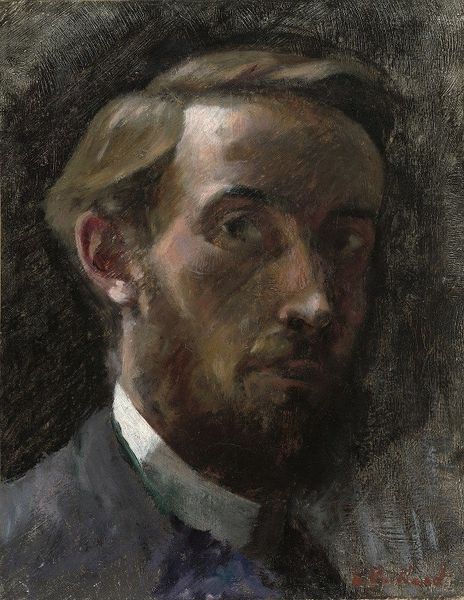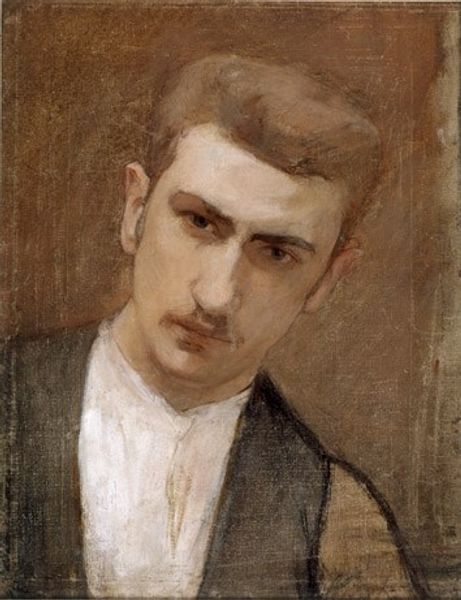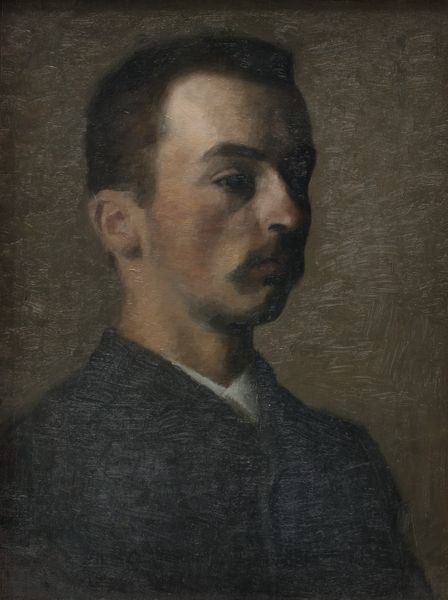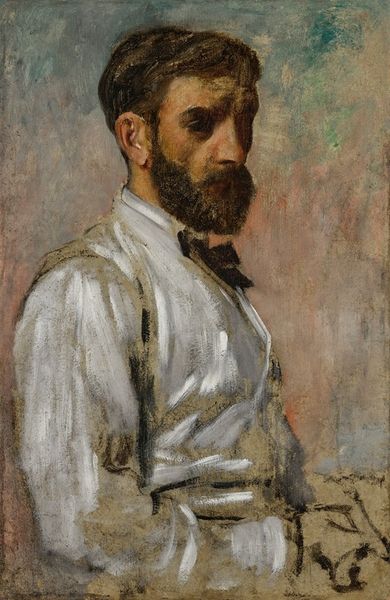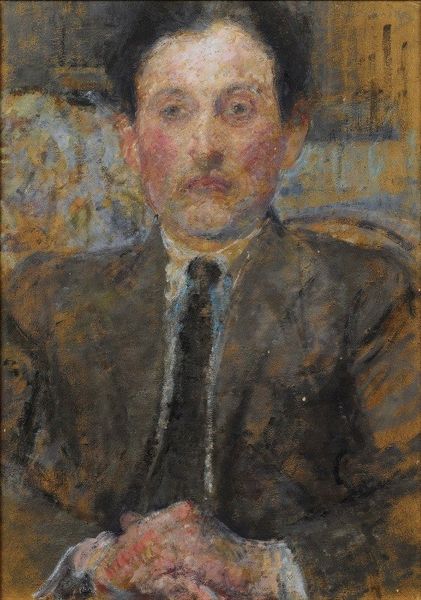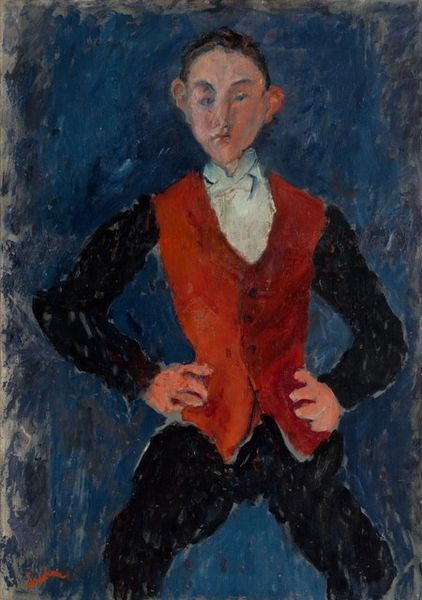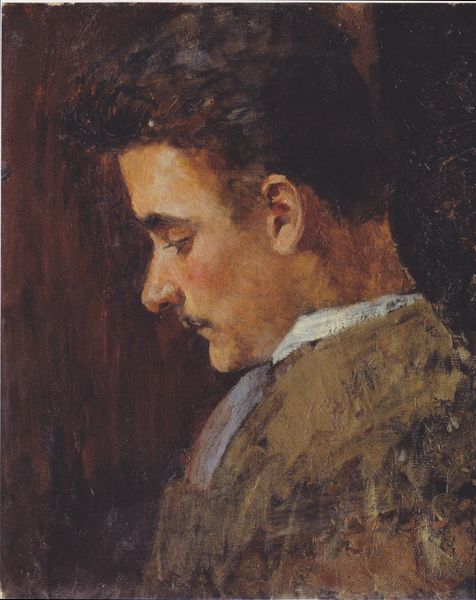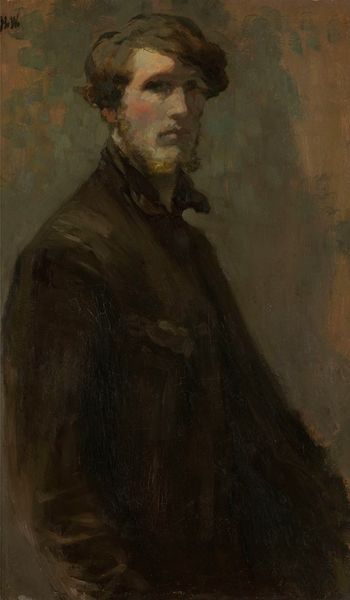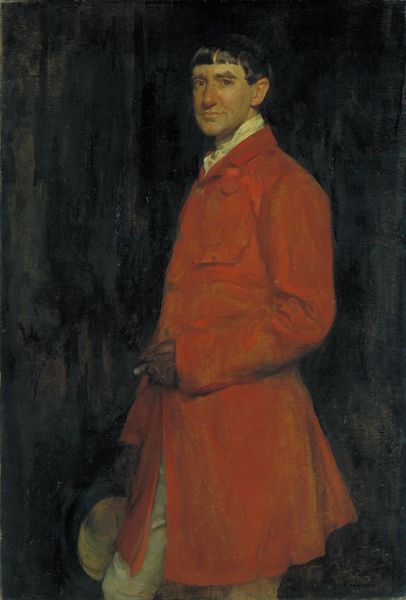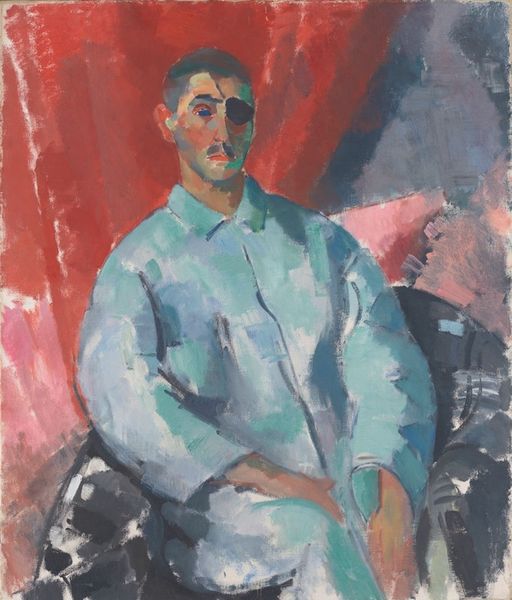
Dimensions: overall: 63.5 x 42.1 cm (25 x 16 9/16 in.)
Copyright: National Gallery of Art: CC0 1.0
Mark Rothko painted “Head of Bayard” using oil on canvas. The portrait has a social purpose as Rothko’s early works were focused on social realism, depicting scenes of everyday life and working-class individuals. This work was probably made in New York in the 1930s, during the Depression era, and it's likely that Rothko was influenced by the social and political climate of the time. Many artists then aimed to use their work to promote social change and address issues of poverty and inequality. Rothko engaged with the institutions of art, such as the Artists' Union, as part of this project. The somewhat melancholic depiction of the man, Bayard, set against the red background, speaks to a certain experience of the human condition. Art historians piece together the life of an artist by studying their social involvements and institutional activities to understand the forces that shaped their work.
Comments
No comments
Be the first to comment and join the conversation on the ultimate creative platform.
